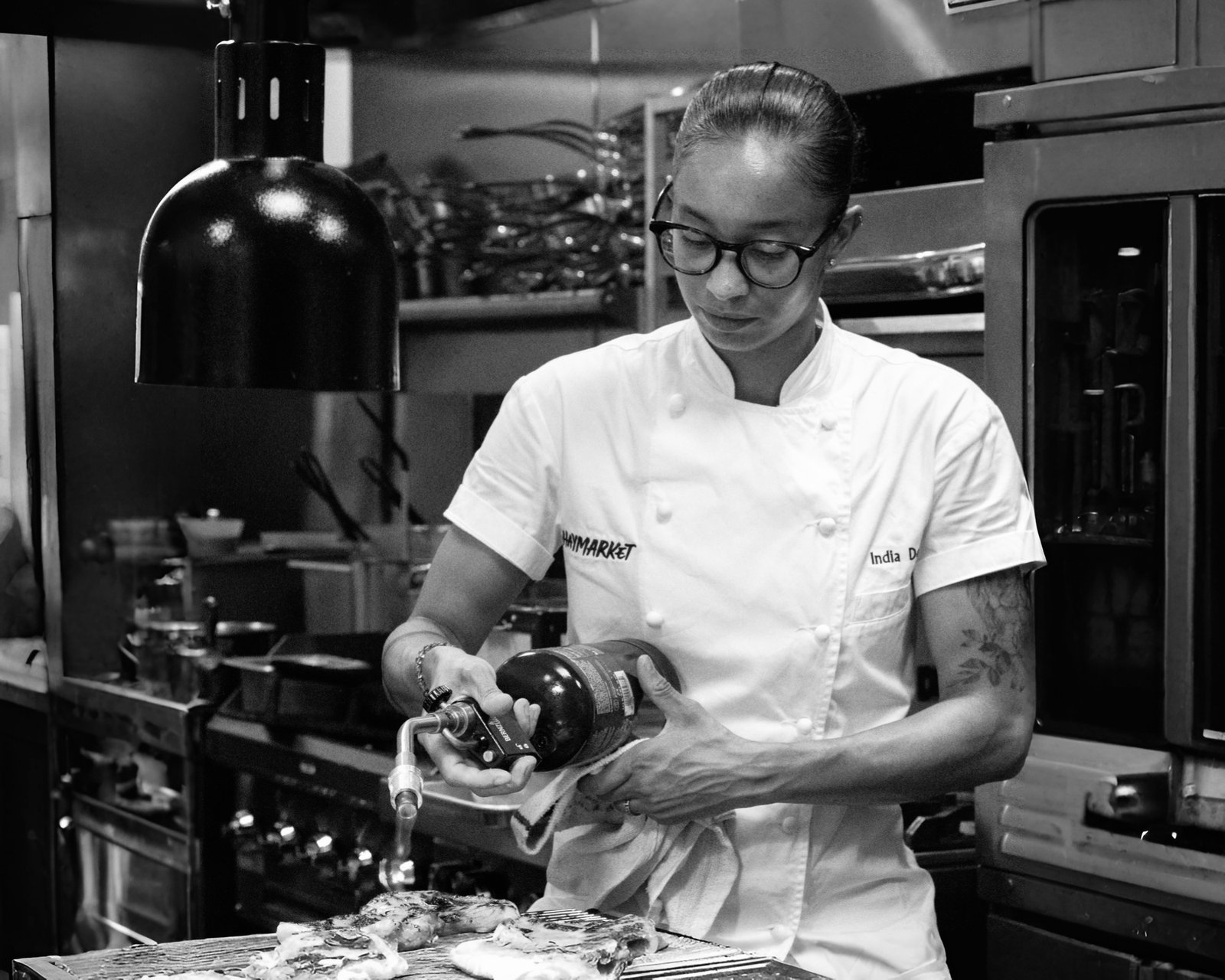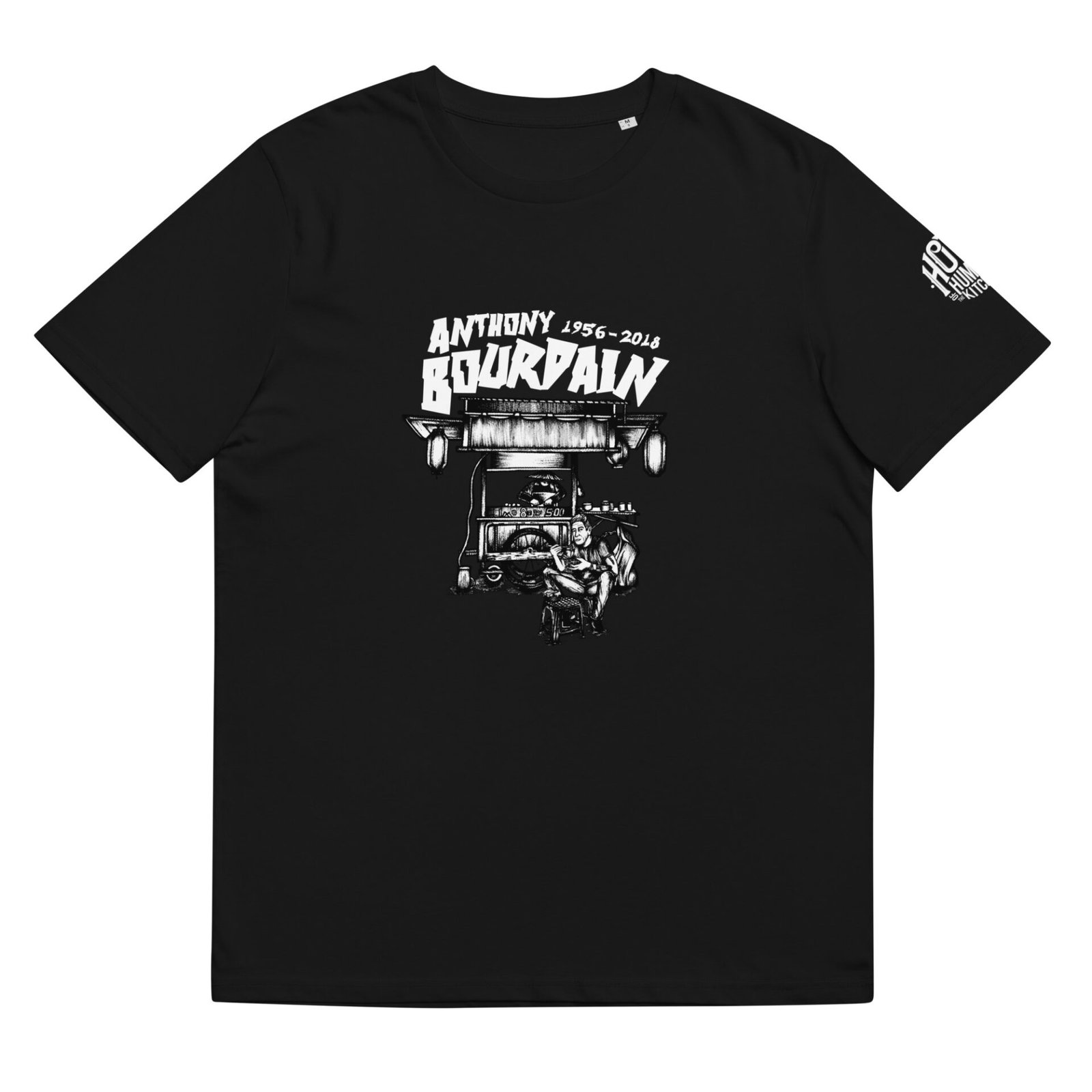Becoming the Chef She Needed
Dismissed as “too small, too different,” she carved her own way from peeling veg to running her own kitchen.

India Doris
I grew up in London, where Sundays were sacred in my house. In the UK, a traditional Sunday roast typically includes roast chicken, beef, or pork served with potatoes, Yorkshire pudding, gravy, and all the trimmings. But in my Jamaican grandmother’s kitchen, it was a little different. We’d have jerk chicken or oxtail alongside the traditional sides, sometimes with rice and peas. These meals were about gathering together, talking, and laughing around the dinner table. That’s where my love for cooking began.
I’ve never really considered another career. When I was younger, I enjoyed running track, but nothing made me feel the way cooking did. But culinary school wasn’t an option for me because we couldn’t afford it. So at 15, I went to a town away from my own and walked into a restaurant to beg the chef for a job. That’s how I got my foot in the door.
My first kitchen job was all over the place, peeling vegetables, picking herbs, putting away deliveries, washing dishes, and cleaning stations after service. I was working 18-hour days, six days a week, making about 300 pounds a month, and living on my own by the time I was 16. It was exhausting, but it taught me resilience.
People doubted me in those early years. I was “too small,” “too different.” No one really wanted to teach a little teenage girl how to be part of the team. Instead of letting it discourage me, I used it as fuel. I watched everyone, tasted dishes when no one was looking, and drew sketches of station setups in my notebook long before smartphones existed. I learned by being observant, curious, and determined.
My philosophy in the kitchen is simple: I’m here to throw dinner parties every night. My favorite memories are of my family sitting together, eating and talking with no phones or TV, just connection. My grandma hosted those meals and took pride in them, and I want to create that same feeling for the people I cook for.
The kitchen has been my safe place in more ways than one. In my late teens and early twenties, when I couldn’t afford groceries, my chef let me come in on my day off to eat the family meal and take home basic ingredients. That generosity helped me get through some tough months.
Opening my own restaurant, @marketterestaurant, is one of my proudest achievements. It gave me the chance to take everything I’ve learned, the precision and attention to detail from fine dining, the flavors I grew up with, and combine them into something that’s mine.
For me, cooking has always been about more than what’s on the plate. It’s about bringing people together, the way my grandmother did every Sunday, and creating a space where everyone feels welcome.
I run my kitchen like a pirate ship filled with people from different places, with different stories and personalities. Diversity is important to me, not just for the creativity it brings to the food, but for the richness it adds to the team.
One thing I hope to see more of in the industry is women in leadership roles. I didn’t work for a female chef until I was 14 years into my career, and that needs to change. I want to make sure the next generation doesn’t have to wait that long to see women leading from the front.
Photo credits to @thenatalieblack
Secret Sauce
- What’s the most unexpected ingredient you’ve ever worked with, and how did it change your perspective on cooking?
Not an ingredient but an area of the kitchen. I spent a couple of years working in pastry, and it taught me so much about individual ingredients and how to use them properly, which translated when I moved back to savory.
- What’s your “guilty pleasure” meal?
Carbonara Buldak noodles.
- A food trend that you hate and why?
Putting caviar and Truffles on everything. There’s a time and a place, it doesn’t need to be on every course! I love both just appropriately.
- What’s the craziest shift you’ve ever worked in the kitchen? What happened, and how did you manage to get through it?
I had an allergic reaction one time. My whole face and body swelled up like a balloon. I went to the hospital and was put on the drip for a couple of hours. I pulled out the IV drip and ran back to work just in time for service.
5. What happened, and how did you manage to get through it?
I ate a fig.
- What tips would you give to other cooks and chefs to help them navigate their culinary careers and find peace amid the chaos of the kitchen?
Be patient and don’t rush your career. Take the time to learn and travel!
- What’s an underrated ingredient and why?
Sour Cream! Better than crème fraiche.
8. What’s a must-try dish from your kitchen or the one you’re proudest to have prepared?
Peri Peri Chicken
Salt Cod Fritters
Oxtail Gratin
About Your City!
London
- If Anthony Bourdain or a chef came to your city, what would be the perfect tour itinerary from breakfast to dinner?
- Fish, Wings and Tings – Caribbean food
- Dishoom – for breakfast, Indian/English Breakfast (The big Bombay)
- Any of Jackson Boxer’s restaurants





